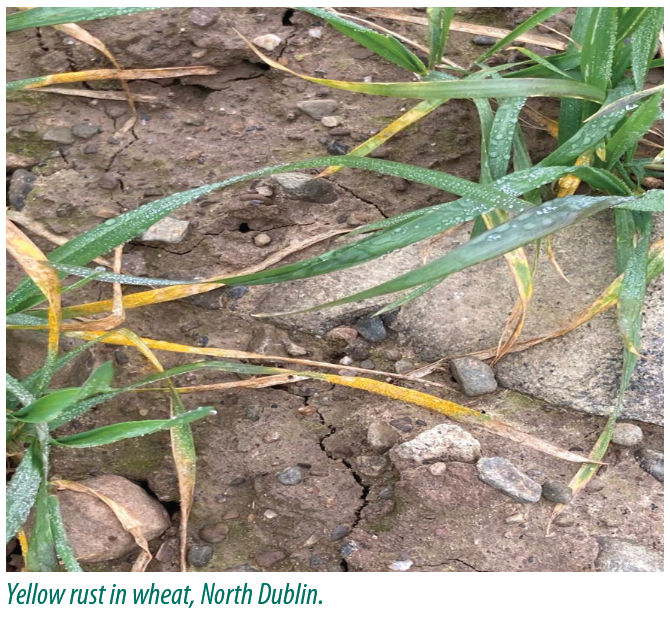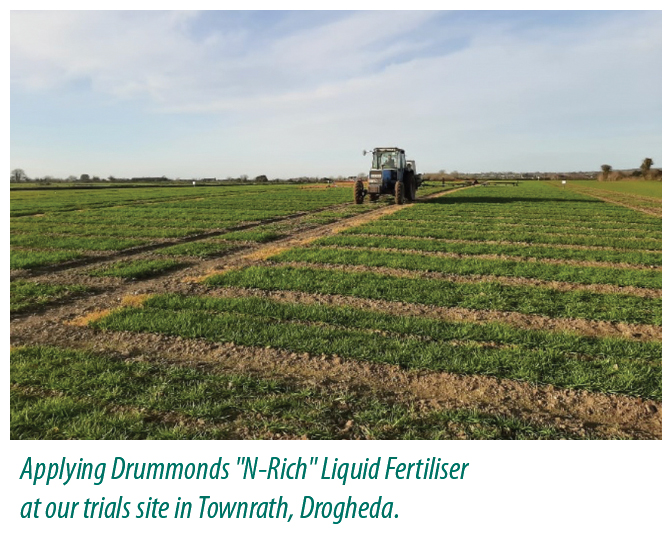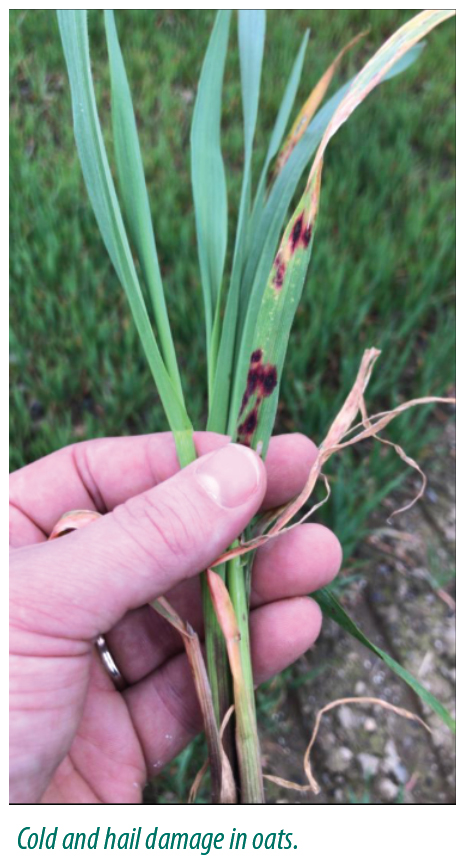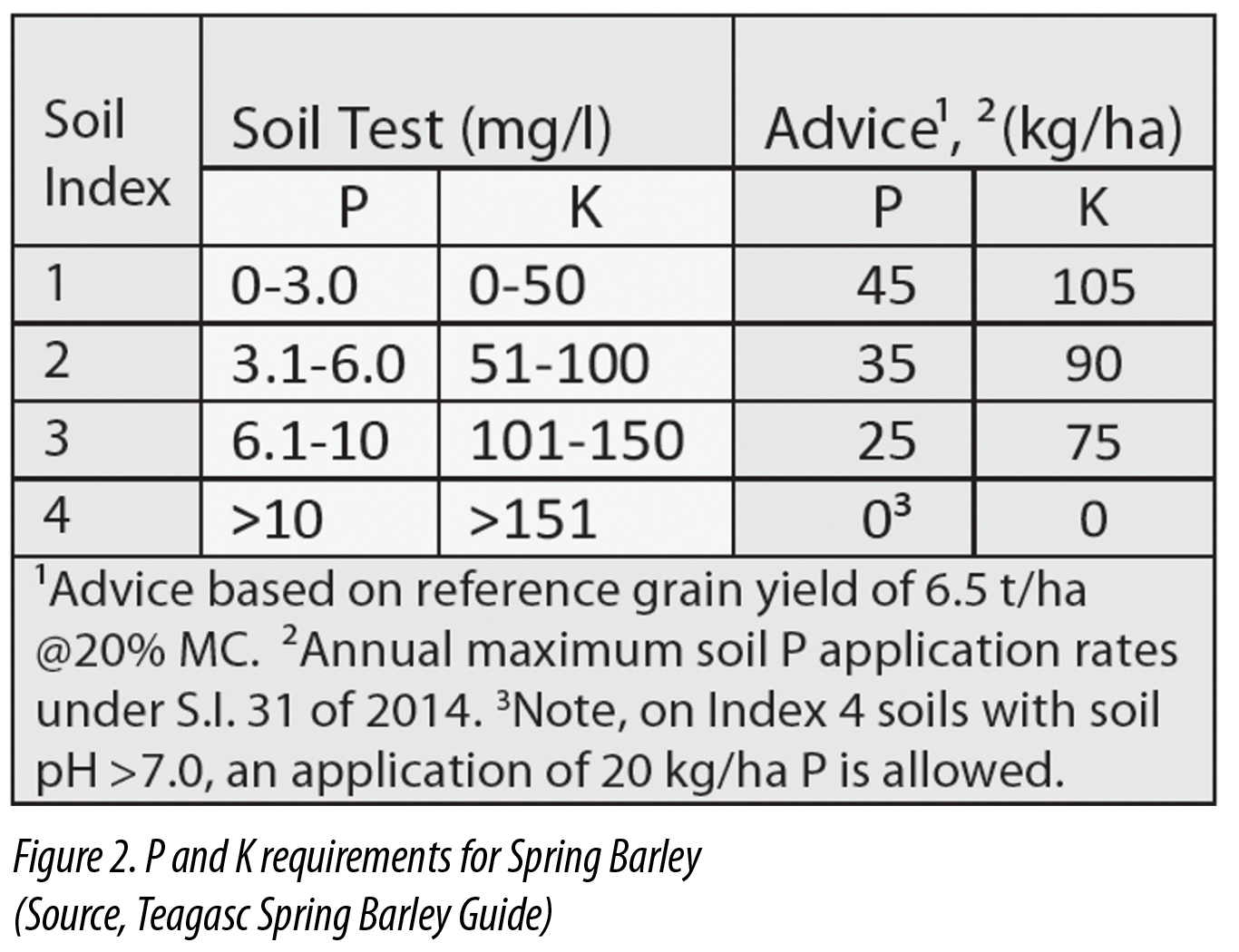A total of 199.4ml of rain so far this year has only allowed ground to become reasonably dry since St Patricks day. Two recent weeks of excellent drying conditions has kicked the spring cropping season into full swing.
WINTER WHEAT
 For low soil N indices, a three-split-N programme for winter wheat should be followed, with the first application having being applied in mid-March, main split by GS 31 (first node - which is fast approaching), and last split by GS 39 (flag-leaf fully extended). Volunteer beans are a problem in many crops, but are easily controlled using Zypar. Yellow rust is present on varieties such as Graham, Torp and Bennington, and a T0 application would be recommended to treat this. A strobilurin based programme partnered with a triazole will provide protectant and systemic action against yellow rust on badly effected crops. Speak to your Drummonds agronomist for further information on this. CeCeCe, Sonis and Medax Max will be the products of choice for PGR application. If lodging is a risk, use Medax Max at both T0 and T1 timings.
For low soil N indices, a three-split-N programme for winter wheat should be followed, with the first application having being applied in mid-March, main split by GS 31 (first node - which is fast approaching), and last split by GS 39 (flag-leaf fully extended). Volunteer beans are a problem in many crops, but are easily controlled using Zypar. Yellow rust is present on varieties such as Graham, Torp and Bennington, and a T0 application would be recommended to treat this. A strobilurin based programme partnered with a triazole will provide protectant and systemic action against yellow rust on badly effected crops. Speak to your Drummonds agronomist for further information on this. CeCeCe, Sonis and Medax Max will be the products of choice for PGR application. If lodging is a risk, use Medax Max at both T0 and T1 timings.
WINTER BARLEY
For winter barley, many growers have applied the first 50kg/N/ha applied in early March at mid-tillering. The next plan is to apply the main split of nitrogen by GS31, which is fast approaching as crops are advancing quickly around the country. Crops on low indices soils requiring over 180kg/N/ha should have a three-split N programme. Aim to have all N applied by GS 32 (second node). With regards to backward crops, an application of K2/CCC before stem extension was a good boost to crops to promote tillering. As annual meadow grass has tillered, it is now too late for adequate control.
WINTER OATS
Winter Oats have shown strong growth. Nutrition can be delayed on thriving crops to make the best use of available soil resources. Black spots are present on leaves, a sign of cold and hail damage. This will not significantly affect plant performance. Oats have a high K requirement due to the vast amount of straw they produce. 120 units/acre of K will be needed. Aim to apply PGR at GS 31.
Over the last number of years, Drummonds cereal trials have shown that Medax Max doesn’t check the crop as much as trinexapac-ethyl based products.
As temperatures often fluctuate in late March and early April, our trials revealed that Medax Max is a far more sensible option on oats. Nitrogen applications on oats (index 1 = 165kg/N/ha) will be completed soon, with a 50:50 split at GS30 and GS32. If greater yields of 7.5t/ha are expected, add 20kg/N/ha for each t/ha yield increase.
SPRING WHEAT
Spring wheat seed is scarce, and those that ordered early have approximately 50% planted. Aim to have one-third of your nitrogen on the seedbed.
SPRING BARLEY
Soil conditions over date should dictate the time to sow. Try to avoid soil compaction as ground is still wet. Have low tyre pressure at sowing and only roll if dry. Seed-soil contact is essential to get the barley germinating as quickly as possible, so create a seedbed to allow for this. Apply a third of your N at drilling, with the rest applied at GS 12. P and K at drilling will help plants to establish quickly and form sufficient root systems that will be needed later to reach soil moisture deep in the soil profile. Weed control must be optimised for min-till systems as weed pressure will be increased compared to a plough-based system.
In terms of seed availability, we still have Highway, Planet and Arderin seed available to order.
SPRING BEANS
Weed control should be completed pre-emergence with beans. Beans compete poorly with weeds in their early life, so a robust weed control programme is necessary.
If weeds become prominent in the crop, it will also cause harvesting difficulties later. A firm, fine seedbed free of clods will give the best chance of residual herbicides controlling weeds. Field history will determine what products to use. Sowing rates were determined by thousand grain weight. As the yield potential of spring beans decreases after the first week of April, it is important to prioritise beans before the likes of malting barley or spring rape.
Sufficient amounts of sulphur (15kg/ha for cereals) is important on fields with a history of deficiencies. We must do all we can to maximise our yield potential. Sulphur and Nitrogen work together, so applying these together is recommended.
Don’t forget about micronutrients
The addition of micronutrients should not be overlooked for the 2021 season. It is important to apply these to cereals before GS31 to maximise yield potential. The addition of micronutrients such as Boron, Zinc, Manganese, Iron, Copper, Molybdenum and Chlorine will reduce any chances of deficiencies showing up later in the year and compromising plant health. An interesting study conducted by YARA during 2018-2020 concluded 70% of wheat samples received were deficient in boron. The inclusion of Boron is important in plant pollination, therefore plant fertility. In oilseed rape, Boron is needed for seed set, pod set and seed weight. Deficiency of Manganese is the most widespread among cereals, however, it is easily controlled with foliar application. Zinc application will also correct cereals that are grown in low Zinc soils. Speak to your local Drummonds tillage advisor for more information about micronutrient applications to crops.

STRAW INCORPORATION SCHEME (SIM)
The Straw Incorporation Measure (SIM) is now open for applications (via the BPS application form) and will close on the 17th May. €250/ha will be on offer for cereal straw, while the payment for OSR straw will be €150/ha. Farmers must commit to a minimum area of 5ha with a maximum allowance of 40ha. It should be noted that application to the scheme does not guarantee acceptance, as an abundance of applications will create a ranking process and therefore, a selection process.
Article Written by: Michael Howard, Drummonds Technical Sales Advisor 086 185 5868

